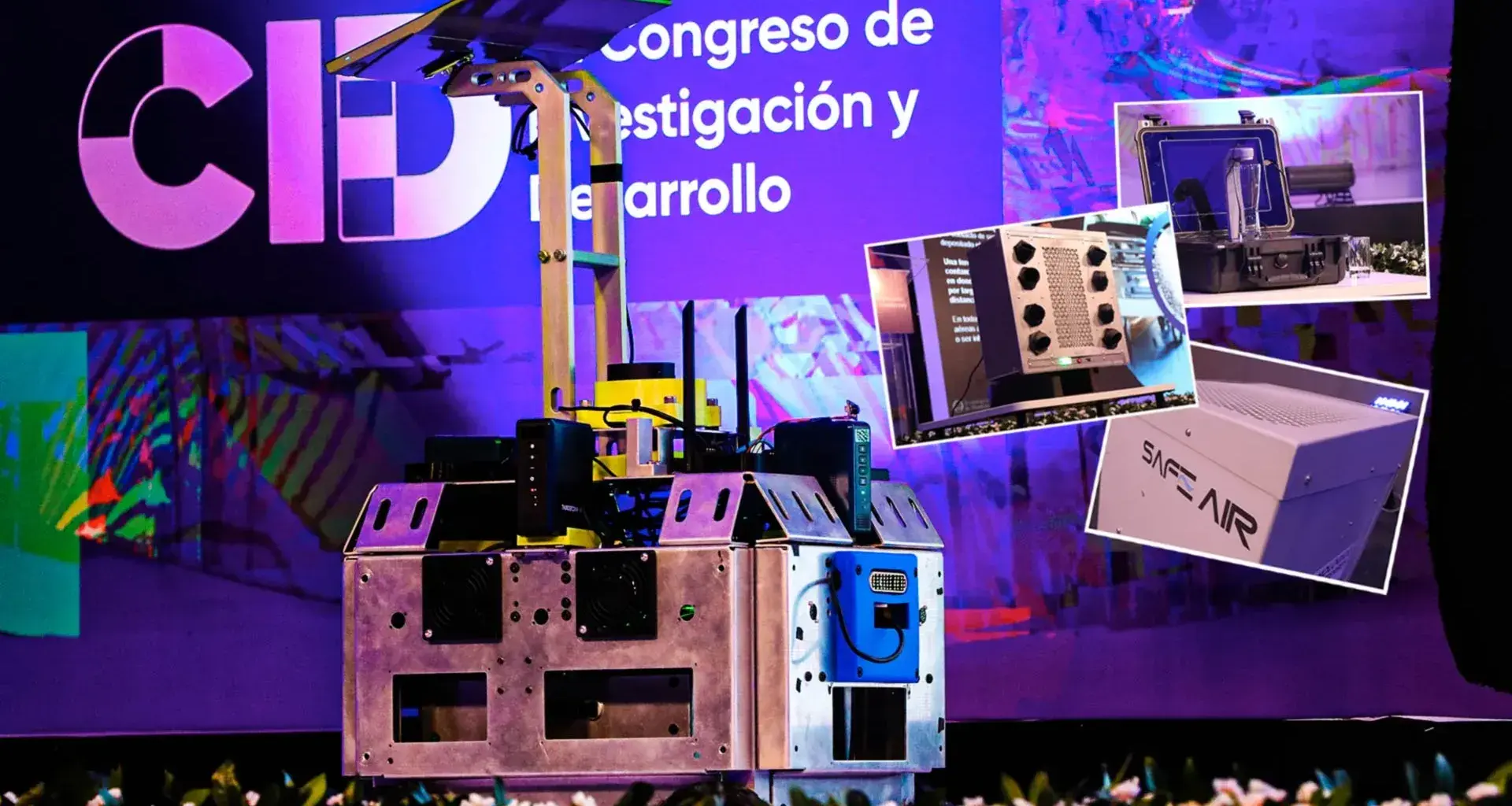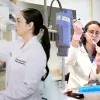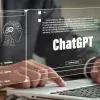Some of the projects promoted by the Borregos Tecnológicos program include technologies for robotic assistance, COVID detection with molecular technology to calculate capacity, or for purifying environments.
“The program was created by Tecnológico de Monterrey to accelerate development of prototypes in 12 weeks,” said Dr. Jorge Avendaño, Director of Commercialization and Technology Transfer at the Tec.
This initiative operates through calls offering financial resources of up to 500,000 pesos to the creators of these prototypes and providing them with time to develop their prototypes.
At CONECTA, we show you the projects that were presented at the Tec’s 52nd Research and Development Conference:
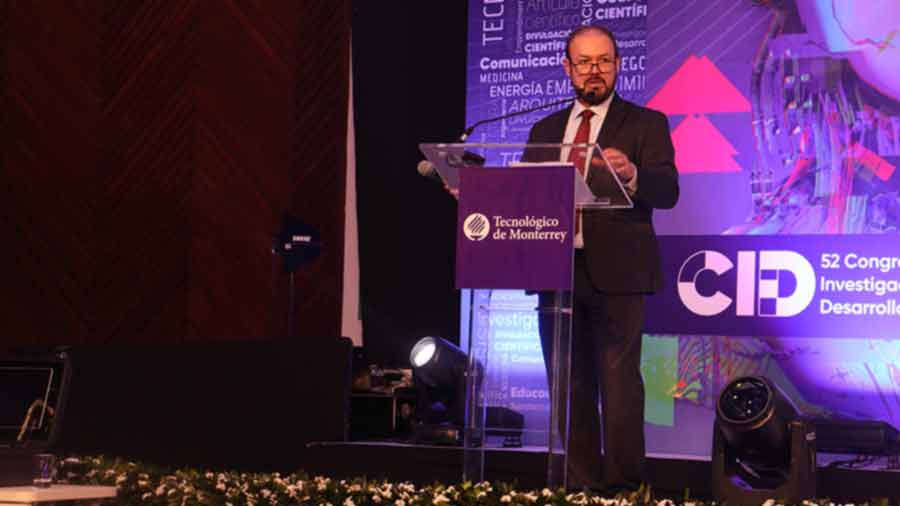
1. Autonomous mobile robot for biometric measurement
The PiBot autonomous mobile robot is built with a set of sensors that enable navigation with biometric measurement capabilities.
It can provide medical assistance, detect people not wearing masks, calculate a place’s capacity, the distance between people, and locate people with COVID.
However, its functionality is not limited to the pandemic, as it can help in commercial and workplace areas, among others.
This robot has the ability to make contact-free deliveries, interact with users in real time, and navigate spaces autonomously. It contains a touch screen and a web browser.
This robot was developed by Dr. Jorge de Jesús Lozoya, Jorge Murrieta, Dr. Mauricio Adolfo Ramírez, and Juan Ángel González.
They are in the process of obtaining a patent and will later participate in the Shark Tank program in search of funding.
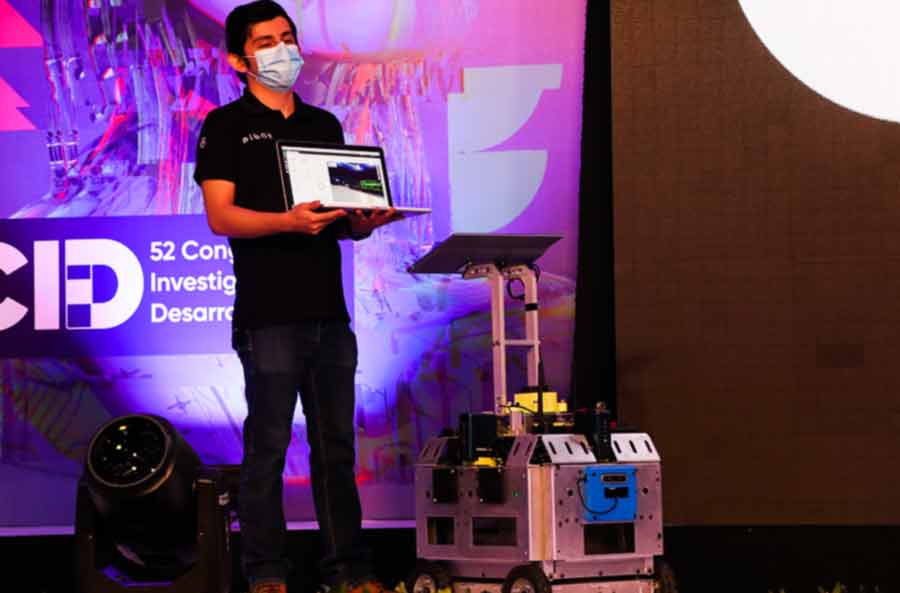
2. Wastewater monitoring for detecting COVID
The MARTEC epidemiological monitoring system is used to detect cases of COVID-19 through periodic sampling of wastewater in buildings and designated areas.
“The wastewater network is like a circulatory system. It provides us with very useful information about people’s state of health, their activities, and other activities,” said Dr. Eduardo Sosa, a researcher on the project.
Using molecular biological technology, the laboratory performs reverse transcription polymerase chain reaction (RT-PCR) analysis to locate the presence of ribonucleic acid (RNA) from the SARS-CoV-2 virus.
The system enables the detection of outbreaks of infections up to 10 days in advance.
In addition to the process of wastewater laboratory analysis, the MARTEC team has implemented the use of a traffic light scheme to provide an alert level for the presence of the virus.
READ MORE:
3. Real-time body temperature diagnosis
Tec researchers created this rapid body temperature measurement system to function without physical contact. It was designed to be installed at the access points to buildings and other facilities to monitor people.
This system is based on the use of facial recognition algorithms and thermal imaging cameras and systems that work in real time, as well as using a distributed signal, which allows it to be connected and monitored remotely.
“With the return to on-site activities, security is very important, and one of the first problems is those access filters. The objective is to monitor in real time to avoid waiting lines and crowds,” said Dr. Manuel Macías.
Through the cameras, the system can also activate different alerts by detecting, for example, the correct use of masks or other accessories such as glasses without affecting facial recognition.
By detecting temperature changes, it can pick up variations early in users who may present a risk of infection of COVID-19 or other diseases.
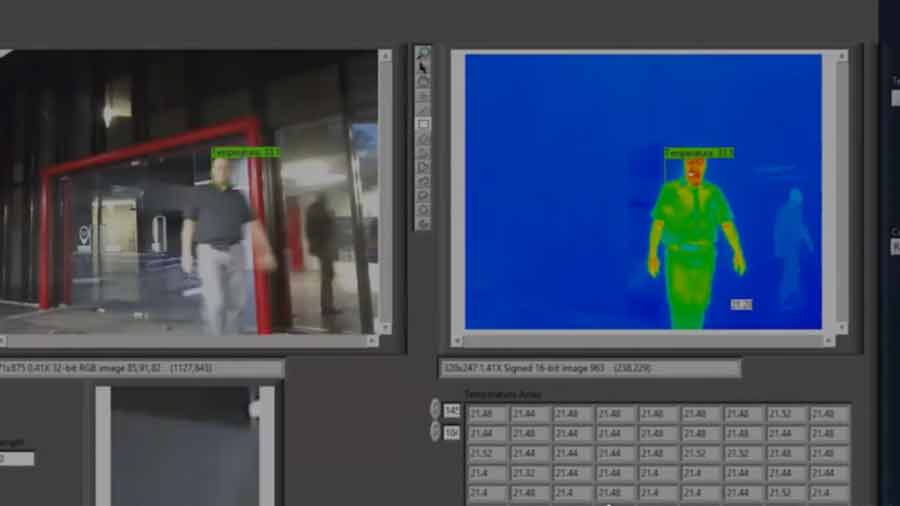
4. Air purification with Safe Air
This system can purify the air in crowded areas such as schools, government offices, and restaurants, removing microparticles that are harmful to people’s health and viruses such as SARS-CoV-2, which causes COVID-19.
Safe Air was created by Fernando Delgado, Omar Campuzano, Enrique López, Alejandro Montesinos, and Michel Romero. Romero explains that one of its main features is control and visualization via the web.
“You can have 500 devices and manage them from a single control center. You can monitor them at the same time, show their location, temperature, humidity, and CO2 levels,” Romero said.
He also says that unlike with other similar devices on the market, filters can be obtained through a large number of suppliers at a low cost.
These devices are already being used at Tecnológico de Monterrey. The system’s creators are collaborating with the University of California, Berkeley, to develop other similar technologies.
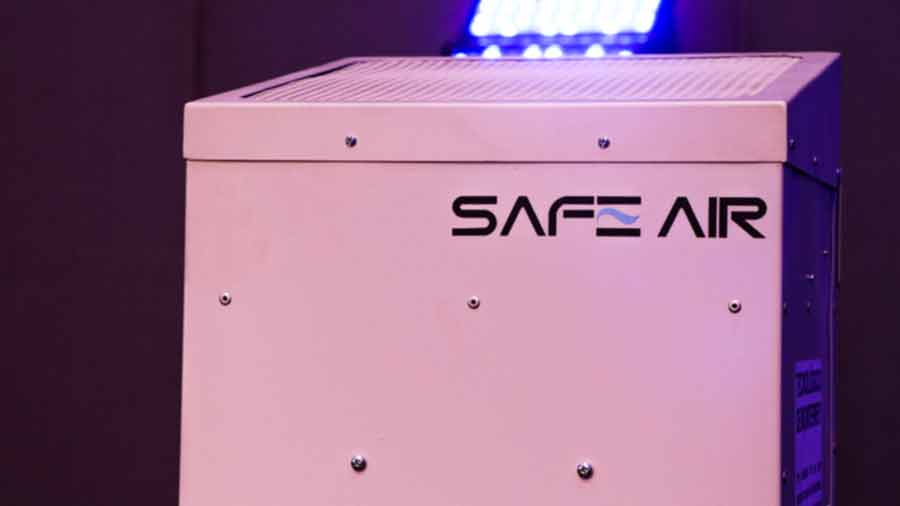
5. PUREX ultraviolet light air purification
This is an air sterilization device meant to be installed on room ceilings and uses 254 nanometers of ultraviolet light to eliminate microorganisms such as the SARS-CoV-2 virus.
“Airborne infections usually occur between people interacting inside a room, That’s the problem this device attempts to solve,” said Azael Cortés, leader of the project.
“We have a compendium of a variety of microorganisms for which we know the dose needed and the survival percentage of the pathogen,” Cortés explained.
The equipment can filter up to 600 cubic meters per hour, which means that it would change the air up to 4 times per hour in rooms of approximately 100 cubic meters.
“The most important thing about our design is that it’s made to sterilize on contact, which means that it eliminates 99.9% of pathogens in less than 1 second when air comes into contact with them,” he added.
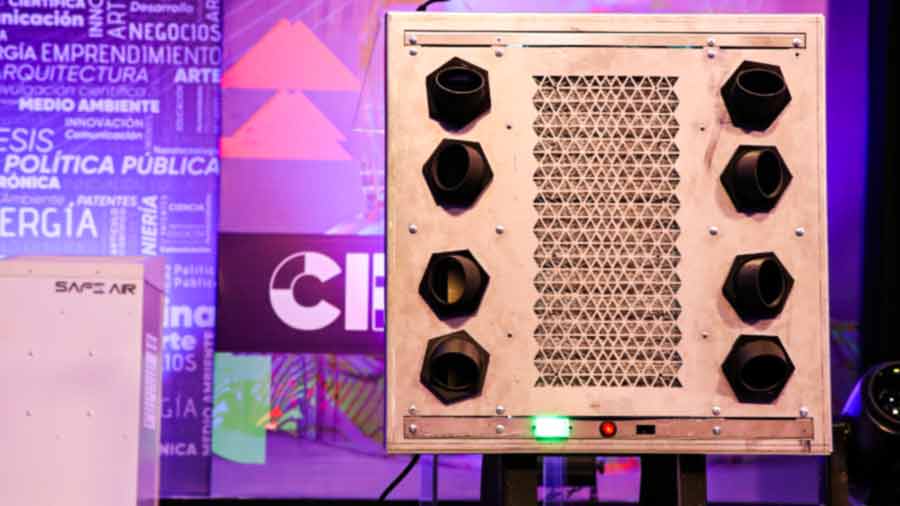
6. RoboCov autonomous assist robot
This robot is a platform with different modules that can be added to allow for different functionalities.
Among other features, the robot can be used to transport material, detect the correct use of masks, use an ultraviolet light module to sanitize, or be a mobile hand disinfection station.
The name of the robot alludes to the actions for combating COVID-19, but its creators point out that it can even serve as a guide for visitors at Tec de Monterrey.
“It can (even) play audio messages. We’ve done tours on the Mexico City campus, and people pay attention to it.
“The robot is giving tours and even sanitizing at the same time,” said Pedro Ponce, leader of the project.
7. Interface for distancing analysis through artificial intelligence
This project consists of an interface that utilizes artificial intelligence to detect the correct social distancing between people who spend time together in defined spaces.
“Different preventive measures have been applied during the COVID pandemic to limit infections. One of those measures has been social distancing,” said Roberto Munguía, the project’s artificial intelligence engineer.
The project, led by Dr. Sergio Uribe, provides assistance in automatic monitoring of this safety measure implemented by the Tec and other institutions.
Through its cameras, the platform captures images in real time and can record different metrics such as the number of people, non-compliance in the area, and times when there are more people.
It identifies people individually, pointing them out with green and red indicators depending on whether or not they are complying with social distancing and how long they breach it.
“Audible and visual alerts can be issued depending on the distance being detected,” Munguia said.

8. “Shazam” for filling containers
This project consists of a prototype that can detect a vacuum through the sound generated when it’s being filled, which can be used to automatically fill containers varying from a glass to a silo.
“It uses physics to identify cavities which, in this case, are receptacles with resonance frequencies related to the geometry of empty spaces.
“Their geometry varies, and we can determine the resonance frequency. That’s what we analyze,” said Manuel Alejandro Trejo, one of its creators.
This technology can be used in various applications from movie theaters, where the filling of glasses can be automated, to bottling machines, grain silos, or even coffee machines.
“(The new) prototype can now identify the exact type of container. It’s like Shazam but detects the container to be filled,” Trejo said.

9. Autonomous vehicle automation system
The project incorporates both hardware and software mechanisms to give low-speed vehicles the ability to move autonomously through controlled industrial environments.
To do this, the development team offers the integration of a robot with sensors that can be added to different types of platforms such as forklifts and golf carts.
“What we did was mount sensors, adapters, and processors to interact with some software that’s capable of making a course plan for the vehicles,” Edgar said.
It has a control that aims for autonomy by controlling the direction and traction of vehicles at low speed.
There are ultrasonic connectors in the software part to ensure safety and verify that there are no obstacles in front of the robot, which has a 3D LiDAR laser scanner, cameras, radar, and sensors to locate itself during autonomous navigation.
“The robot can recognize everything it sees. It can differentiate different objects such as chairs, people, cars, or other robots, all to safely plan its route,” he added.
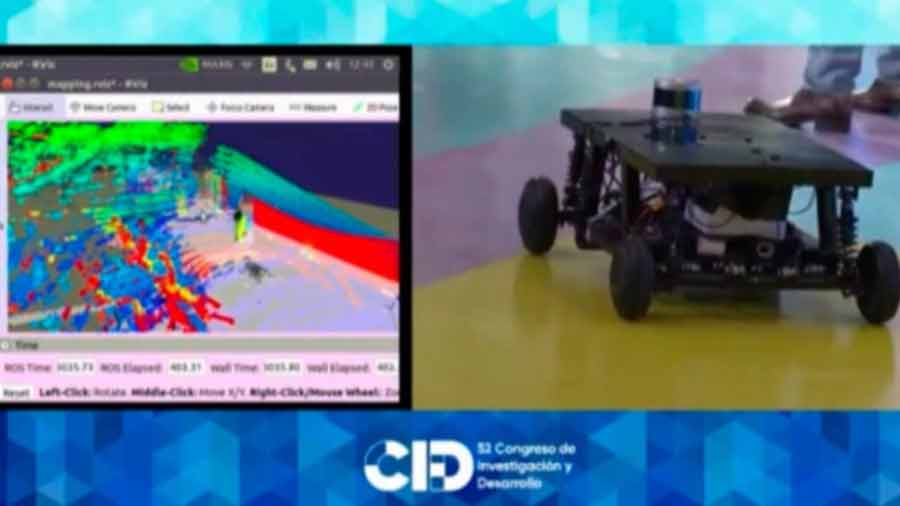
10. Capacity monitoring in collaborative spaces
Dr. Héctor Ceballos presented this technology that uses a sensor to detect the presence of people in spaces such as meeting rooms or classrooms, which is already being used at Tec de Monterrey.
“These sensors collect environmental information that is sent to the cloud and presented on a screen in real time to indicate whether the room is full, half full, or empty,” says Ceballos.
The doctor points out that, during the pandemic, it was first intended to identify whether or not there were people in a room. However, once the levels of in-person attendance were increased, they now want to determine current capacity.
The platform also allows collection of data so that prediction models of room use and capacity can be created using Artificial Intelligence.
“This would allow the spaces to be reconfigured. (For example) based on what happened from Monday to Wednesday, we predicted low occupancy behavior for Friday,” Ceballos said.
Ceballos adds that it can also be connected to energy-saving systems to reduce the use of lights and ventilation systems, among others.
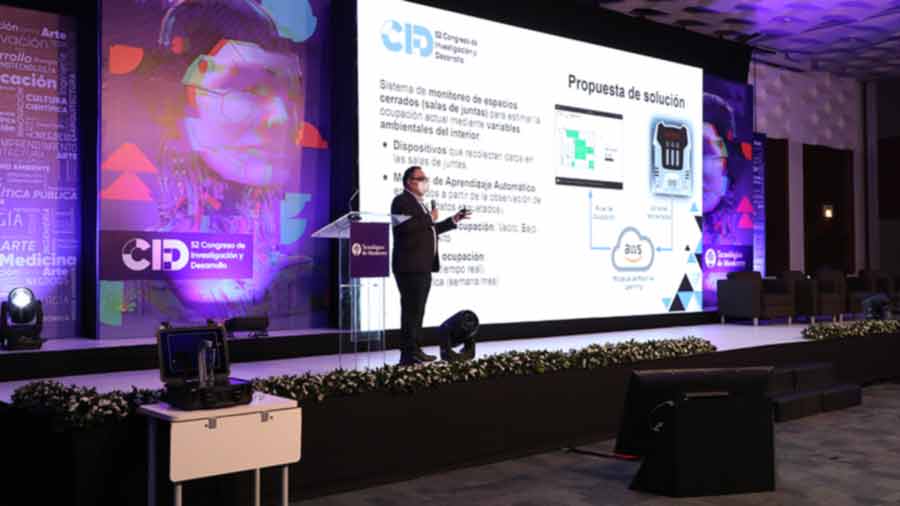
11. Body movement recording system
The project consists of a series of sensors that can be placed on people’s limbs and other parts of their body and can then record and graph joint movements through an interface.
“Understanding our own movement, our body biomechanics, can give us information to allow us to detect certain pathologies and even make rehabilitation more efficient,” said Martín Bustamante, project leader.
The value proposal of the equipment is to offer a low-cost modular movement acquisition system that can be applied in different areas.
This prototype consists of a module with inertial sensors and an elastic clamping system so that it can be placed on the part of the body you want to capture the movement information about.
The development team also designed a computer interface that connects with the devices to visualize and graph the person’s movements.
Potential customers for this system include institutions dedicated to clinical and sports medicine, robotics and entertainment institutions, and academic institutions.
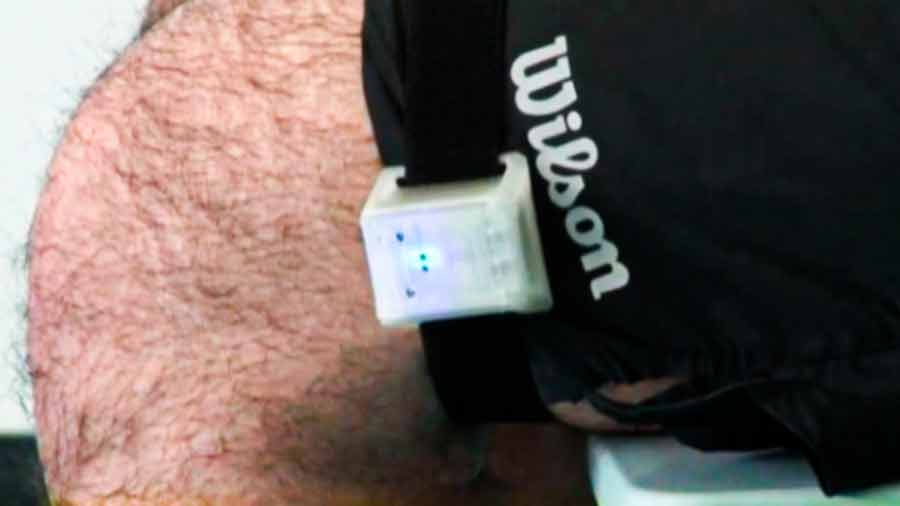
12. Algorithm for capacity calculation
This project seeks to replace manual measurement of the capacity of universities, shopping centers, and other spaces that measure the number of people who enter their facilities.
“The way this counting process is carried out (at the Monterrey campus) is manually. If people pass through a campus access point, guards have a simple manual device they click.
“That obviously involves the manual physical work of someone who pays attention at all times to people entering and leaving,” said Cristian Mendoza, director of the project.
Mendoza explains that they created a device that uses cameras and algorithms to detect people entering and exiting to provide data on the capacity of a space in real time.
This system also allows for the creation of alarms to signal when the permitted capacity levels are being reached or exceeded.

The 52nd Research and Development Conference
The Research and Development Conference has been held annually since 1971. Now in its 52nd year, it will be held from March 2 to 4, 2022, at the Monterrey campus Conference Center.
“For Tec de Monterrey, it’s crucial to continue developing a culture of research and innovation,” said Neil Hernández Gress, Associate Vice-Rector for Research and Technology Transfer at the Tec.
“To that end, platforms, spaces, and activities such as the Research and Development Conference are designed with the purpose of involving, sharing, and communicating scientific and technological research,” he added.
READ MORE:

